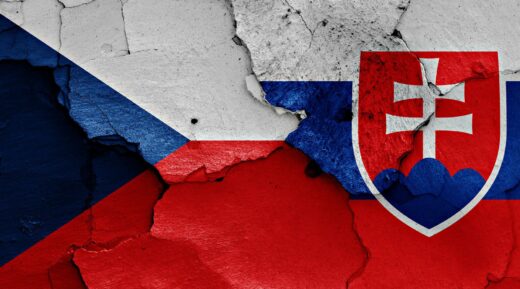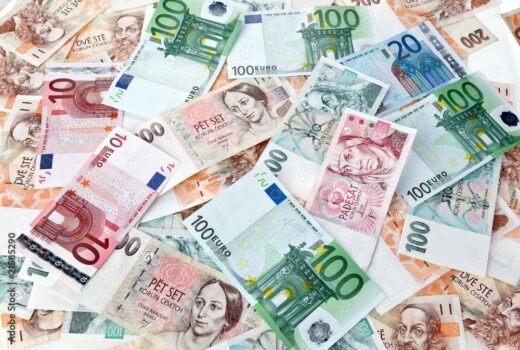Czechia and Slovakia – the heart of Central Europe. Two neighboring countries formed one country called Czechoslovakia not only once but two times. They share a common history, yet there are quite a few distinctions. Especially today, they differ in many aspects. Do you want to know more? Find out in this article!

Czechia and Slovakia – two ice-hockey rivals.
Culture
Even though Czech and Slovak cultures were united during Czechoslovakia, historically, they were influenced by different countries. Czech culture is heavily influenced by its historical ties to Germany and Austria, which is reflected in its cuisine, music, and architecture. No wonder Brno is nicknamed ‘Little Vienna’ due to its architectural resemblance.
On the other hand, Slovakia has been shaped by its proximity to Hungary and Poland. It reflects in the type of national dishes like bryndzové halušky (potato dumplings with sheep cheese) and kapustnica (sauerkraut soup), which are distinctively Slovak. Folk music and traditions are very important, especially fujara a traditional wooden flute.
Religion
Both countries have many beautiful churches. However, Slovaks are much more religious than Czechs. From a survey, it is clear, that more than 60 % of Slovak people are of Catholic faith.
On the other hand, Czechs are more than 70 % atheistic, and only 20 % are Catholic. Religion itself keeps decreasing drastically in the country over the years.
Economy
Both countries are market–driven economies with major privatizations. The Czech Republic has a more successful economy. Major export commodities of Czechia include machinery, raw chemicals, and fuel. Slovakia’s export #1 is vehicles. It produces 184 cars per 1,000 inhabitants while Czechia produces 105 vehicles. Keep in mind that Czeachia is twice the size of Slovakia.
Regarding the unemployment rate, Slovakia reflects the European Union average of around 6 %. Czechia counts with around 3 to 4 %. This is also caused by young Slovak professionals, who after finishing their studies in the Czech Republic, opt to stay in the country and do not return to Slovakia.

The Czech Republic doesn’t change its currency for euros.
Currency
An obvious difference is the national currencies of these two countries. During the Czechoslovak period, the national currency was the Czechoslovak crown. After these countries split, the national currencies became Slovak crowns and Czech crowns.
Even though Czechia is closer to Western Europe and has a stronger economy, it refuses to change its currency to the euro. Slovakia, which became a member of the European Union at the same time, changed its currency to euros in 2009.
Language
While both nations speak Slavic languages, Czechs speak Czech, and Slovaks speak Slovak. These languages are mutually intelligible to some extent, but they have distinct vocabulary, pronunciation, and grammar. For example, you won’t find ř or ě in Slovak, but there will be other letters like ŕ, ô or ľ.
While Slovaks understand Czech (more or less) without problems, Czechs, mostly the younger generations, struggle to understand Slovak. Why is it so? There are many channels in Czech available in Slovakia and there are many movies and shows dubbed in Czech. On the contrary, Czechs are not so in touch with the Slovak language in media, and even some Slovak series are dubbed into Czech.
If you want to feel at home, check out our categories of “Living” and “Culture” where you will find tips for great pastime activities and recommendations for cultural events not to be missed. You will not only have a lot of fun but also learn about your new home.
Sources: Pew Research Center, Plus jeden deň, Visit Bratislava
Image source: Stream, Adobe Stock

This is a beautiful piece of information. Thanks